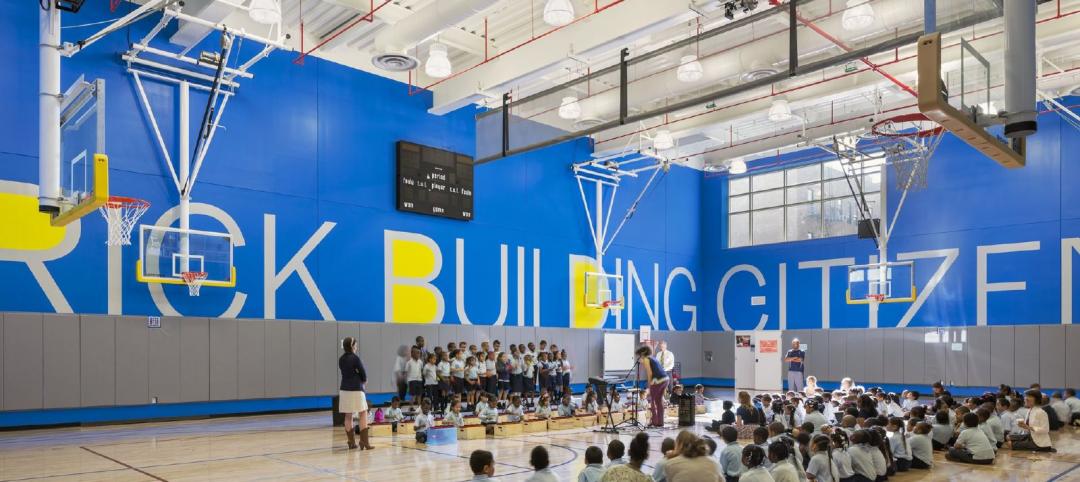In 1995, the city of New Haven, Conn., launched a program to build five new schools and renovate and upgrade seven others. At the time, city officials could not have envisioned their program morphing into a 17-year, 44-school, $1.5 billion project to completely overhaul its entire portfolio of K-12 facilities for nearly 23,000 students.
New Haven's massive undertaking is being handled by the Glastonbury, Conn., office of program manager Gilbane Building Companies (ranked #7 for CMs on BD+C's 2006 Giants 300 list), whose responsibilities on the project evolved along with the project itself.
Gilbane was originally hired as one of three construction managers who were to divvy up work on an 11-school, $23 million program. It didn't take long, however, for New Haven school officials to realize that they lacked the skills and resources to oversee the project, so Gilbane found itself competing for—and winning—the role of program manager. In 1998, the firm was asked to review the district's master plan; two years later, they unveiled a new multiphase plan that involved construction and renovation of 46 schools (later trimmed to 44), with a budget exceeding 10 figures.
Gilbane VP Tom Rogér says it took some time for the firm to gain the city's trust. “The first couple of years, there was a real learning curve on both our parts,” says Rogér. “What helped us a lot was that when we said something was going to happen, it happened. That was something they weren't used to. It was a revelation!”
Those hallelujah moments led to the city's approval of the dramatically expanded construction program. “After things started happening and they believed that our project work wasn't b.s., the city's board of aldermen asked why we weren't doing every single school,” says Rogér. The city even used the construction program as an opportunity to realign its grade structure, eliminating middle schools (which had performance, staffing, and safety problems) and creating K-8 facilities and 9-12 high schools.
Funding the original 11-school program involved a “stroke of genius” by the city's finance director, according to Rogér. The finance director bundled 300-400 tax-delinquent properties and sold them to a developer for $23 million, all of which went into a school construction trust fund. Later, the city relied on its bonding authority to fund the projects without having to rely on voter referendums.
One early decision rested on the design of the schools. “From a cost and schedule standpoint, I suggested using templates, and I got an emphatic no,” says Rogér. “They wanted each project to have its own architectural identity.” As a result, each school has a program appropriate to its neighborhood and academic focus. To maintain consistency and continuity, however, Gilbane authored a set of building standards (now in its ninth edition) that Building Teams are required to follow.
Working with 20 different architects and 10 different construction management firms proved wearying at times, but Rogér says that Gilbane made it clear that their firm was running the program and that they would manage it to everyone's advantage. “That added a lot of trust and credibility,” says Rogér. While Gilbane manages the RFQ process, however, the city makes the ultimate decision on which firms get the jobs.
Currently, there are 22 completed school projects and 10 active projects: five under construction and five in the design phase. The first was completed in 1998 and the last school is expected to be finished in 2012, at which time the program will have constructed 4.5 million sf. At its peak in 2006, Gilbane had a dedicated full-time staff of 22 on the projects; current staff totals 17. About 80-90% of the staff came from within Gilbane.
“One of the biggest benefits to New Haven—or any school district—is that hiring an outside program manager lets you hit the ground running with experienced people, systems, and relationships to make things happen,” says Rogér. “A public entity has to staff up or convert existing in-house staff to run a program of this size. Your building engineer who's been doing sidewalks for the past few years should never be put in the position to oversee a $1.5 billion program.”
On the other hand, Roger acknowledges, “there are some programs where the in-house people hate you because they think they could do a better job. We were lucky, in that the city tried to do the work themselves for a couple of years and they saw how hard it was. New Haven is happy to have us.”
|
Related Stories
| Sep 22, 2014
4 keys to effective post-occupancy evaluations
Perkins+Will's Janice Barnes covers the four steps that designers should take to create POEs that provide design direction and measure design effectiveness.
| Sep 22, 2014
Sound selections: 12 great choices for ceilings and acoustical walls
From metal mesh panels to concealed-suspension ceilings, here's our roundup of the latest acoustical ceiling and wall products.
| Sep 9, 2014
Using Facebook to transform workplace design
As part of our ongoing studies of how building design influences human behavior in today’s social media-driven world, HOK’s workplace strategists had an idea: Leverage the power of social media to collect data about how people feel about their workplaces and the type of spaces they need to succeed.
| Sep 7, 2014
Behind the scenes of integrated project delivery — successful tools and applications
The underlying variables and tools used to manage collaboration between teams is ultimately the driving for success with IPD, writes CBRE Healthcare's Megan Donham.
| Sep 4, 2014
Best of education design: 11 projects win AIA CAE architecture awards [slideshow]
The CAE Design Excellence Award honors educational facilities that the jury believes should serve as an example of a superb place in which to learn. Projects range from a design school in Maryland to an elementary school in Washington.
Sponsored | | Sep 4, 2014
Learning by design: Steel curtain wall system blends two school campuses
In this the new facility, middle school and high school classroom wings flank either side of the auditorium and media center. A sleek, glass-and-steel curtain wall joins them together, creating an efficient, shared space. SPONSORED CONTENT
| Sep 3, 2014
New designation launched to streamline LEED review process
The LEED Proven Provider designation is designed to minimize the need for additional work during the project review process.
| Sep 2, 2014
Ranked: Top green building sector AEC firms [2014 Giants 300 Report]
AECOM, Gensler, and Turner top BD+C's rankings of the nation's largest green design and construction firms.
| Aug 27, 2014
Study looks at lessons from involving children in K-12 school design
A study examining what architects can learn from children, especially during the design process, is being carried out through the University of Sheffield's school of architecture.
| Aug 14, 2014
8 do's and don'ts for completing an HVAC life cycle cost assessment
There are many hurdles to overcome when completing a life cycle cost assessment. RMF Engineering’s Seth Spangler offers some words of advice regarding LCCAs.
















